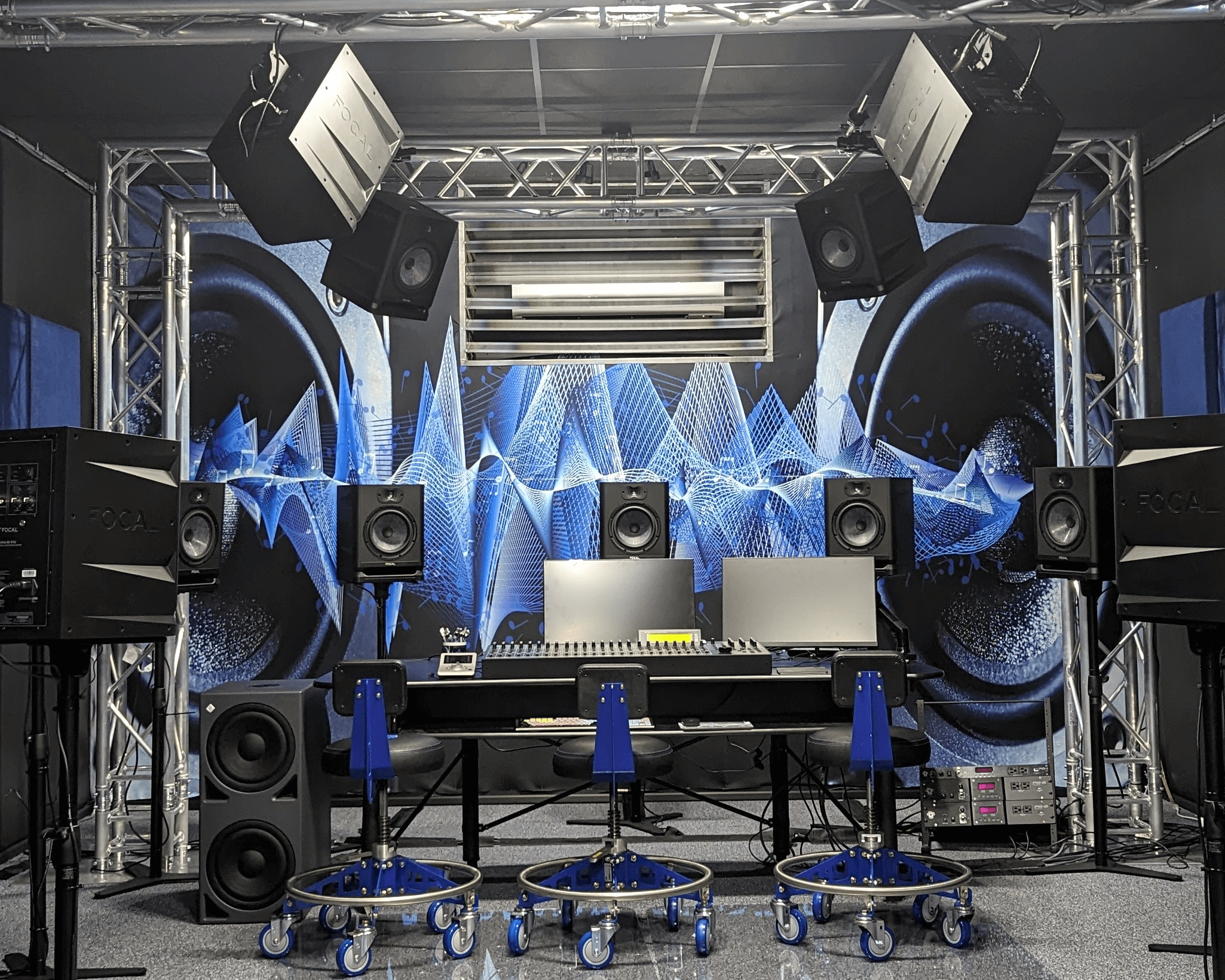Exploring the Future of Sound: Dolby Atmos and Its Impact
Sound technology has evolved dramatically, with innovations continuously enhancing our listening experience. One such breakthrough is Dolby Atmos, a revolutionary audio format that provides an immersive, cinematic sound experience. In this blog, we'll delve into Dolby Atmos, exploring how it transforms the music world and reshapes how we perceive sound.
Understanding Dolby Atmos Technology
Dolby Atmos is a surround sound technology developed by Dolby Laboratories. Unlike traditional stereo or surround sound systems, Dolby Atmos treats sounds as independent objects, precisely placing and moving them around in a three-dimensional space. This movement enhances the sound quality and creates a more immersive experience for the listener.
Picture walking through a bustling rainforest by viewing it through sound. Wherever a sound originates, that's exactly where you hear it. The precise placement is the promise of Dolby Atmos technology, a system that redefines auditory patterns. By fine-tuning the sound dynamics around the listener, Dolby Atmos transforms audio into a 360-degree experience, engaging subtle whisper-like details and grandiose crescendos. Instead of sound simply conveying a message, it becomes an environment, immersing you at the core of a sonic landscape.
The distinction of Dolby Atmos lies in its flexibility and precision. Utilizing an array of speakers, including ceiling-mounted ones, allows audio engineers to craft an entirely new dimension of sound. Height channels add a vertical element, pushing the boundaries of what conventional audio systems could handle. This versatility means that whether you're enveloped by a swirling violin section or immersed in a digital soundwave, the experience is no longer constrained to a flat audio plane. The immersion is total.
The Impact of Dolby Atmos on Music Production
Music producers are leveraging Dolby Atmos to elevate their creative expression. They can experiment with space and depth by placing sound above and around, creating more immersive music. This placement has opened up new opportunities for innovation, allowing artists to transform their music experience.
Dolby Atmos allows musicians and producers to paint within a broader auditory canvas. The ability to sculpt sound in three-dimensional space transcends traditional stereo limitations, offering an interactive medium for artistic expression. With this flexibility, sound designers can animate instruments moving through and around the listener, adding emotion and depth. Atmos introduces novel possibilities akin to a director discovering color film, expanding the sonic palette producers can play with.
With Dolby Atmos, reimagining the creative process is possible. What was once a consideration of left-right balance transforms to include elevation and proximity. Music tracks become immersive journeys that invite exploration of emotional breadth. The growth of this spatial audio technology saw significant backing from industry giants who appreciate its future-proof potential. Embedding intricate sound layers resonates with listeners profoundly, enhancing their engagement with the music.
Listening to Music in Dolby Atmos
For listeners, Dolby Atmos brings a concert-like experience right into their homes. Many streaming platforms and devices now offer music in Dolby Atmos format, providing access to a new level of audio quality. This quality means enjoying more intricate details and clarity, making every note resonate more deeply.
The difference is subtle and striking when converting home setups for Dolby Atmos. Listeners will notice elements like the directional clamor of a live audience or the crisp clarity of a front-row violin as vibrant, compelling aspects of pervasive soundscapes. The format envelops audiophiles, letting them feel the essence of live performances from the comfort of their home environments. Streamlined by platforms such as Apple Music and Tidal, Atmos enriches listening by offering spatial audio playlists that tap into the advanced capabilities.
The Future of Live Music and Dolby Atmos
Live music venues are beginning to adopt Dolby Atmos technology to enhance audience experience. This shift can transform concerts and events, making them more dynamic and engaging. As more venues integrate this system, the potential for rich and immersive live performances becomes boundless.
The live music industry is ready for a revolution by incorporating Dolby Atmos, allowing performers to fill entire venues with ambient euphony. Imagine a theater where sound is not constrained to the stage but immerses the viewers completely—every fluctuation in auditory energy contributing to a felt and heard narrative. This environment intensifies crowd interactions, enhancing the community experience in shared concerts.
Not just traditional venues; festivals and open-air events also feel the impact of Atmos. By using this cutting-edge technology, organizers create unforgettable experiences. Spectators bathe in soundwaves enveloping vast spaces, converting visibility into a rich tapestry of audio exploration. With such technological prowess, the future of live performances is priming to venture into new territories of engagement and exuberance.
Embracing a New Era in Sound
Dolby Atmos is not just a technological advancement; it's a new realm for creativity in music. Solving the sound experience opens up limitless possibilities for artists and listeners alike. As more musicians and venues embrace this technology, imagining the future for soundscapes enriched by Dolby Atmos is exciting. Whether you're an audiophile or just a casual listener, the future promises to be an exhilarating sonic journey.

